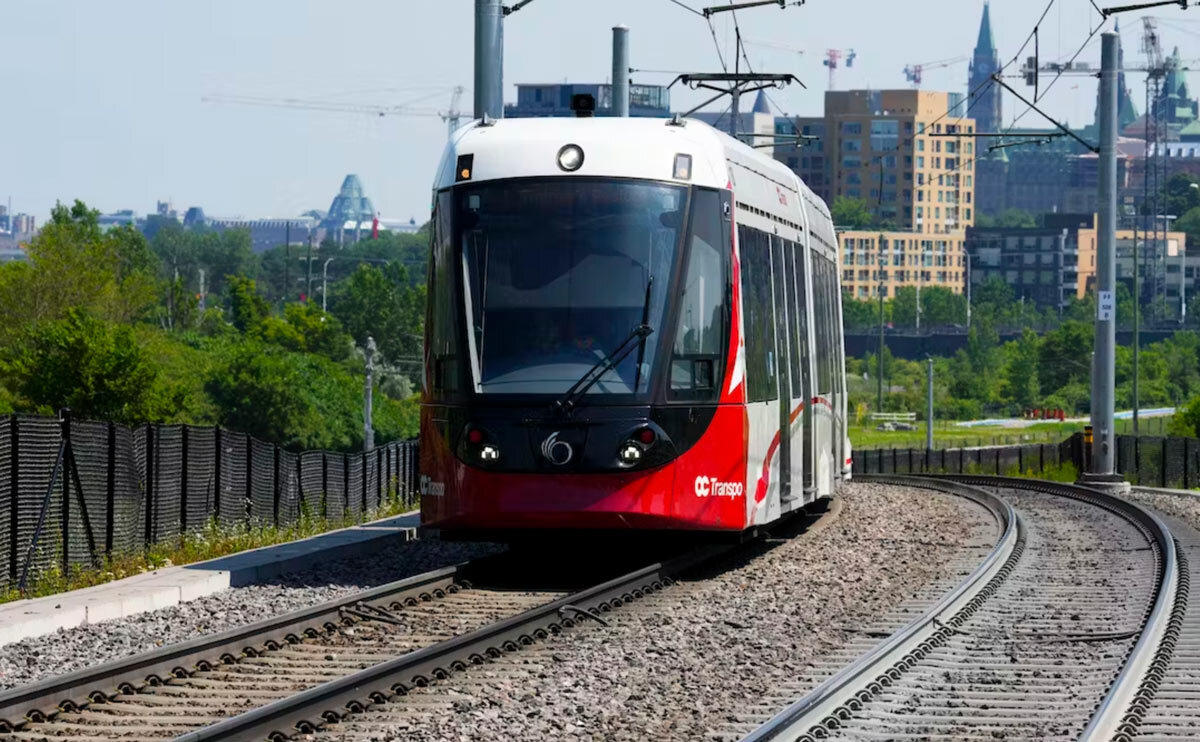Written by Deborah de Lange, Toronto Metropolitan University. Photo credit: THE CANADIAN PRESS/Sean Kilpatrick. Originally published in The Conversation.
It’s no secret that Toronto is falling behind on sustainable transportation compared to other cities around the world, hurting the city’s economy, quality of life and reputation.
Cities like Toronto are struggling with growing populations, public health problems including mental illness and drug addiction, inequality, a climate emergency, biodiversity loss, pollution and decaying infrastructure.
We need to rethink cities and urban change by embracing talent, innovation and collaboration, as suggested by the United Nations Sustainable Development Goal 17 and C40 cities priorities.
Since the status quo isn’t working, how can we adopt better urban designs? The answer lies in more effective public-private partnerships (PPPs).
Better public-private collaborations
My recent research on sustainable transportation PPPs shows they don’t work well for the private sector — despite public perceptions that private companies receive lucrative contracts.
A recent example is Toronto’s Eglinton crosstown light rail transit project. It has not only caused construction and traffic delays but has also eroded the city’s relationship with its private partner.

PPP management needs re-examining through cross-sector collaboration. Proven PPP management expertise is valuable as an export because other cities and countries haven’t figured them out either.
Toronto’s housing and transit problems, coupled with unacceptable levels of inequality, are clear, but these problems are not widely understood as part of an urban design problem that needs input from local talent.
To tackle these challenges, cross-sector collaboration is needed. Improving PPP processes will ensure all partners are on the same page and motivated to achieve common goals. We need a common vision while building better and faster.
A better Ontario
During COVID-19, people voluntarily left Toronto for outlying communities. Many would like to live in a smaller city or town and either work locally, remotely, or have fast transportation to a Toronto office.
Helping commuters access a higher quality of life in smaller cities makes a lot of sense for Toronto and its surrounding communities. Smaller towns would benefit from local growth and increased tourism.
These recent developments support a distributed model of interlinked cities connected by electric high-speed rail. Toronto is a centre surrounded by increasing suburban sprawl exacerbated by provincial plans to pave over critical green space in the Greenbelt for more highways and single-family houses.
Instead, why not develop other cities by connecting them to Toronto and to each other?
Toronto would not need to continue its sprawl if people could commute quickly from other, more affordable communities. Ontarians could commute and visit one another easily. Commuting, tourism and improved collaboration across regions are important but neglected social goals.
All levels of government need to be involved in making this solution a reality. A beautiful place like Wasaga Beach could become a thriving town through electric high-speed rail connections. This model of connected, distributed city centres would improve Ontario for all of us.
Is high-speed rail a reality?
The Québec-Windsor corridor, which stretches between Québec City and Windsor, has the population density to support high-speed rail. An electric “High Frequency Rail” for this region could be back on the agenda.
Density and connectivity are a “chicken-and-egg” game when it comes to transportation. Transit access points attract more activity and density because they are connected to other places.
But density is also attracted to existing density where services already exist — for Toronto, this means more sprawl. We have to increase density in smaller towns with well-connected, safe, sustainable, high-speed transportation.
If we build high-speed electric rail across Ontario in environmentally sensitive ways, other cities could grow as well. We could also electrify and expand GO Train service and infrastructure.

But political will is necessary for this vision to become a reality. Billions of tax dollars are currently wasted on projects completely unaligned with international climate commitments, like the Trans Mountain pipeline.
Government priorities need to be redirected to build personal connections, rather than resource connections, across the country. For example, Via Rail has to use the same rails that freight trains use. Since the priority is freight, not moving people, this slows down Via Rail service.
Canada is playing catch-up
There are a number of other countries around the world that have invested or are investing, in high-speed rail. Canada is currently the only G7 country to not have high-speed rail.
China has the longest network of high-speed railways, with trains reaching normal operating speeds of 350 kilometres per hour.
Europe has distributed density by connecting cities with dependable high-speed rail. Japan is another established economic powerhouse leading in high-speed electric rail.

Morocco has high-speed rail between Casablanca and Tangier at 320 km/hr and plans to connect 43 cities with rail. Africa plans to complete a continental high-speed rail system by 2033. Other countries with high-speed rail include Uzbekistan, Thailand, Russia, Israel, Turkey and Saudi Arabia.
Sustainable transportation, such as high-speed rail, would benefit the Toronto region in numerous ways. Ontario has a unique opportunity to develop more effective PPP processes to accelerate the implementation of high-speed rail.


